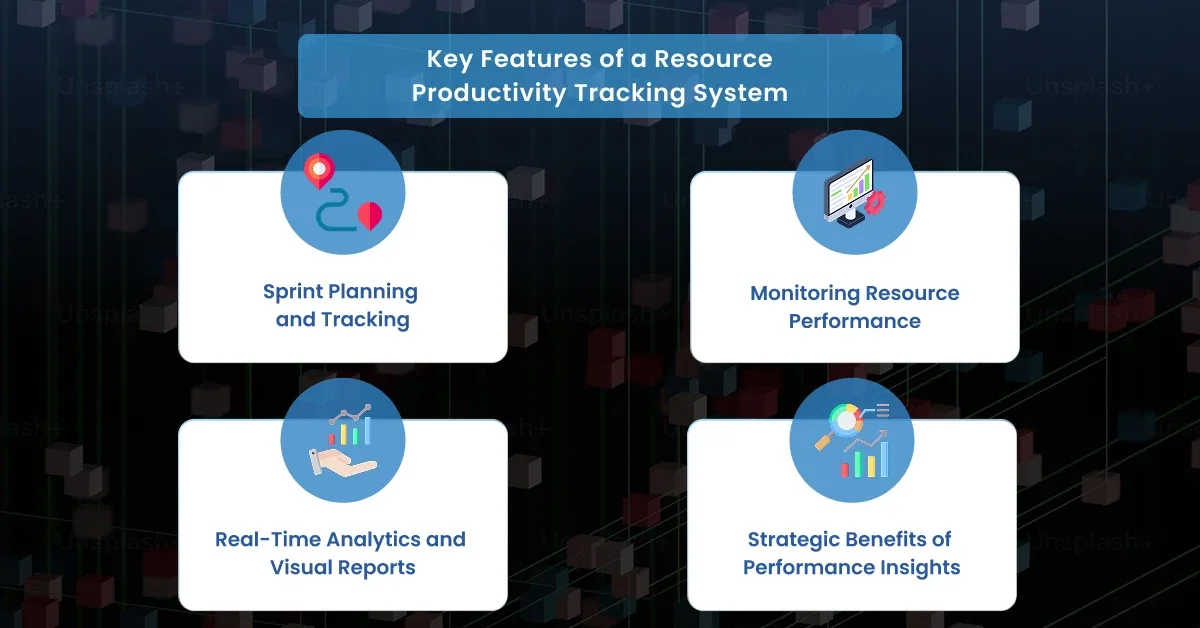 Share Your Requirements
Share Your Requirements
Tracking resource productivity plays a vital role in project management. As a part of performance tracking, It ensures even work distribution, maintains productivity levels, and boosts team performance. Without proper visibility into individual contributions, managers cannot identify bottlenecks, recognize top performers, or balance workloads effectively.
This blog explains the importance of resource productivity, how to define performance metrics, and how to improve team output using tools that simplify this process.
Every project involves people and resources who contribute directly to progress. However, without clear visibility, managers struggle to assess performance accurately. They may not know who has too much on their plate or who consistently delivers high-quality results. This lack of transparency often leads to poor task distribution, with some team members overloaded while others remain underutilized.
This challenge affects more than just individual performance. If the team lacks insight into how each person contributes, project leaders lose predictability. Sprint after sprint, this issue can reduce overall efficiency and delay delivery.

Productivity tracking begins with detailed sprint planning. During this phase, each task receives story points based on effort, complexity, and risk. These points set clear expectations for team members.
Once the sprint starts, the system tracks Sprint Velocity, which shows how many story points each team member completes. At first, the story points, which are basically tasks, are assigned to the resources. As the sprint runs, sprint velocity is tracked, that is, how many story points get done. When a resource delivers more story points than assigned, it is considered as highly productive. This helps managers spot productivity patterns and ensures performance stays on target.
A reliable tracking system monitors progress throughout the sprint. If someone consistently exceeds their goals, the system highlights them as a high performer. This insight helps managers recognize contributions and keeps morale high.
When a resource's productivity drops, the system flags the issue. Project managers can respond quickly and prevent delays from escalating.
The system converts productivity data into easy-to-read charts and graphs. These real-time visual reports help project leads and stakeholders identify performance trends, capacity gaps, and opportunities for improvement.
By removing the need to interpret complex data, visual reports support faster and more informed decisions without requiring micromanagement.
Performance tracking enables project managers to make informed decisions based on data. Instead of guessing, they rely on facts when assigning tasks, adjusting workflows, and evaluating team capacity.
With accurate performance data, managers can increase delivery speed, improve team morale, and maintain consistent progress across projects.
When managers review completed story points, they can spot overloaded team members. This allows them to reassign tasks and maintain a balanced workload. They can also assign more complex tasks to high performers to make better use of their skills.
When a team member's productivity declines, early intervention is critical. A good tracking tool flags slowdowns immediately. This helps managers resolve issues before they affect the sprint.
Historical story point data helps managers identify high achievers. Recognizing these individuals encourages continued strong performance and motivates the entire team.
If one team member consistently handles more work, they may experience burnout. Visual reports make it easier to detect workload imbalances. Managers can redistribute tasks to promote a healthier work-life balance and maintain long-term productivity.
Q1. What are story points in sprint planning?
Story points measure the effort, complexity, and risk involved in completing a task in agile project management.
Q2. How can managers track resource performance?
Managers can track performance using Sprint Velocity, which shows how many story points a person completes in a sprint. This information appears in real-time dashboards.
Q3. How does performance tracking prevent bottlenecks?
The system flags any sudden drop in productivity. Managers receive alerts and can fix the issue before it disrupts the sprint.
Q4. Can a performance tracking tool help balance workloads?
Yes. Performance data helps managers identify overworked team members and adjust task assignments to keep workloads balanced.
Q5. How do managers recognize high performers?
When someone consistently completes more story points than expected, the system highlights them. Managers can then reward and retain top talent.
In summary, resource productivity tracking is crucial for effective project management. It helps you identify bottlenecks, optimize workloads, and recognize high performers—all of which contribute to better project outcomes. With tools like the Oodles platform, you can gain a clear and accurate view of how resources are performing, which leads to smarter, data-driven decisions.
By using performance metrics such as story points and sprint velocity, and visualizing these metrics in real-time, project managers can ensure that no one is overburdened and that productivity is continually optimized. This approach not only improves individual performance but also ensures that the team is operating at its full potential. The right tracking system provides visibility, supports faster decisions, and leads to better project outcomes. Discover how Oodles can help you track and optimize as a team performance tracker.
Contact us today.